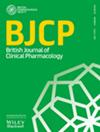Calcium channel blocker overdose: Not all the same toxicity
Abstract
Aims
Calcium channel blocker (CCB) overdose remains an important poisoning, with increasing availability of dihydropyridines. We aimed to compare the severity and treatment of CCB overdoses.
Methods
We reviewed CCB overdoses presenting to two toxicology services from 2014 to 2023. We extracted prospectively collected data from a clinical database, including demographics, dose, co-ingestants, complications, treatments and outcomes, to compare different CCBs.
Results
There were 236 overdoses; median age 55 years (interquartile range [IQR]: 41–65 years); 130 (55%) were females. Dihydropyridine overdoses increased significantly: median of nine cases annually (IQR: 8.8–12.3) during the study compared to a median of three cases annually (IQR: 1–4.3; P < 0.001) in the 10 years prior. The commonest agent was amlodipine (147), then lercanidipine (28), diltiazem (27), verapamil (23) and felodipine (11). Median defined daily dose ingested was higher for dihydropyridines, and cardiac co-ingestants were common except verapamil. Median length of stay was 21 h (IQR: 13–43 h), which was similar except longer for diltiazem (median, 39 h). Fifty-six patients (24%) were admitted to intensive care, more often for diltiazem (14; 52%) and verapamil (7; 30%). Dysrhythmias occurred in 19 patients (diltiazem [9], verapamil [8], amlodipine [2]), and included 13 junctional dysrhythmias. Hypotension occurred in 91 patients (39%), 62 (26%) received inotropes/vasopressors (adrenaline 32 [52%], noradrenaline 48 [77%]), 21 (9%) high-dose insulin and 44 (19%) calcium. Adrenaline and high-dose insulin were more commonly given in diltiazem and verapamil overdoses, compared to vasopressors in dihydropyridine overdoses. Acute kidney injury occurred in 39 patients. Seven (3%) patients died.
Conclusions
Dihydropyridines were the commonest CCB overdoses, with amlodipine making up half. More severe toxicity occurred with diltiazem and verapamil.


 求助内容:
求助内容: 应助结果提醒方式:
应助结果提醒方式:


